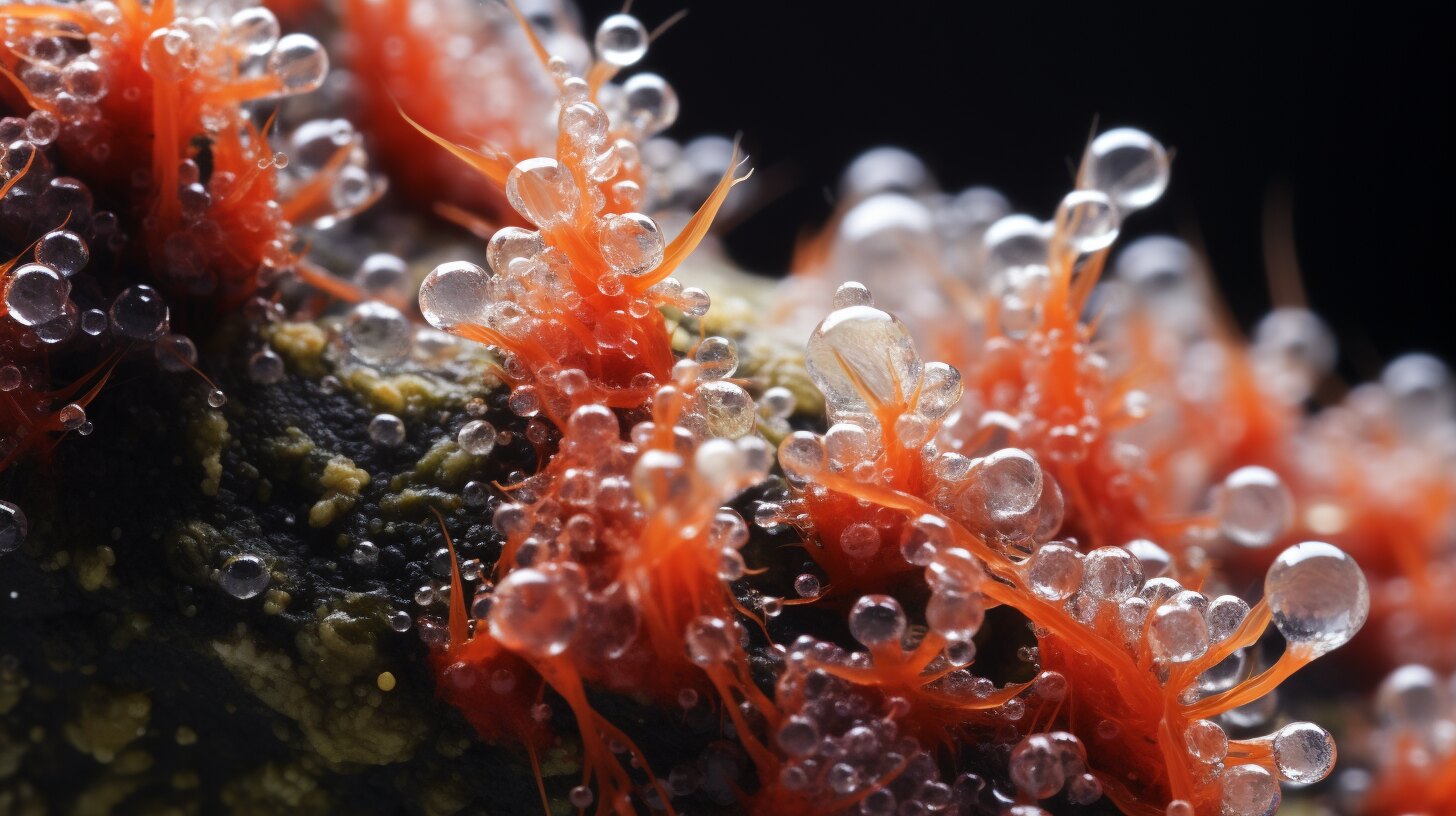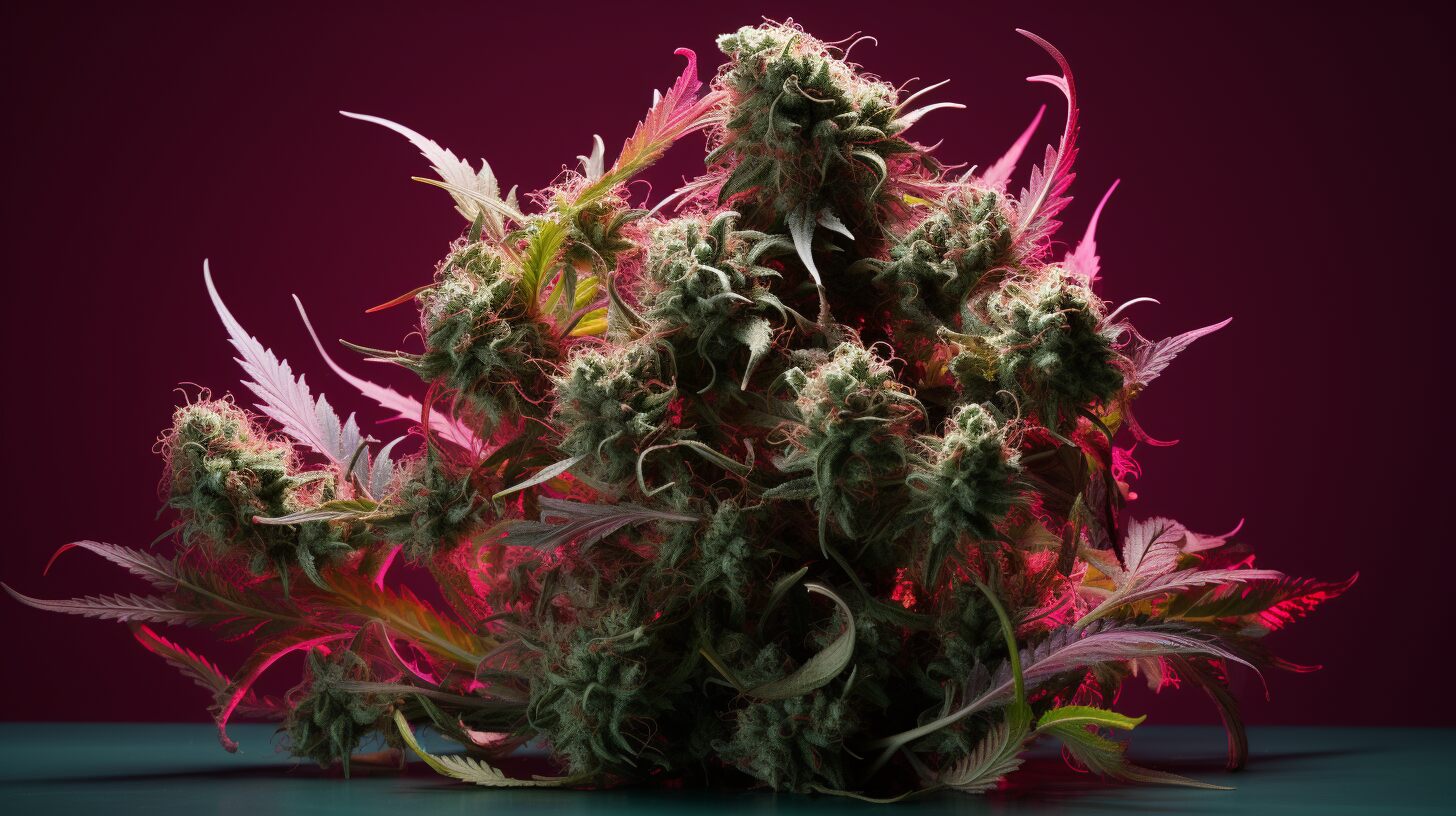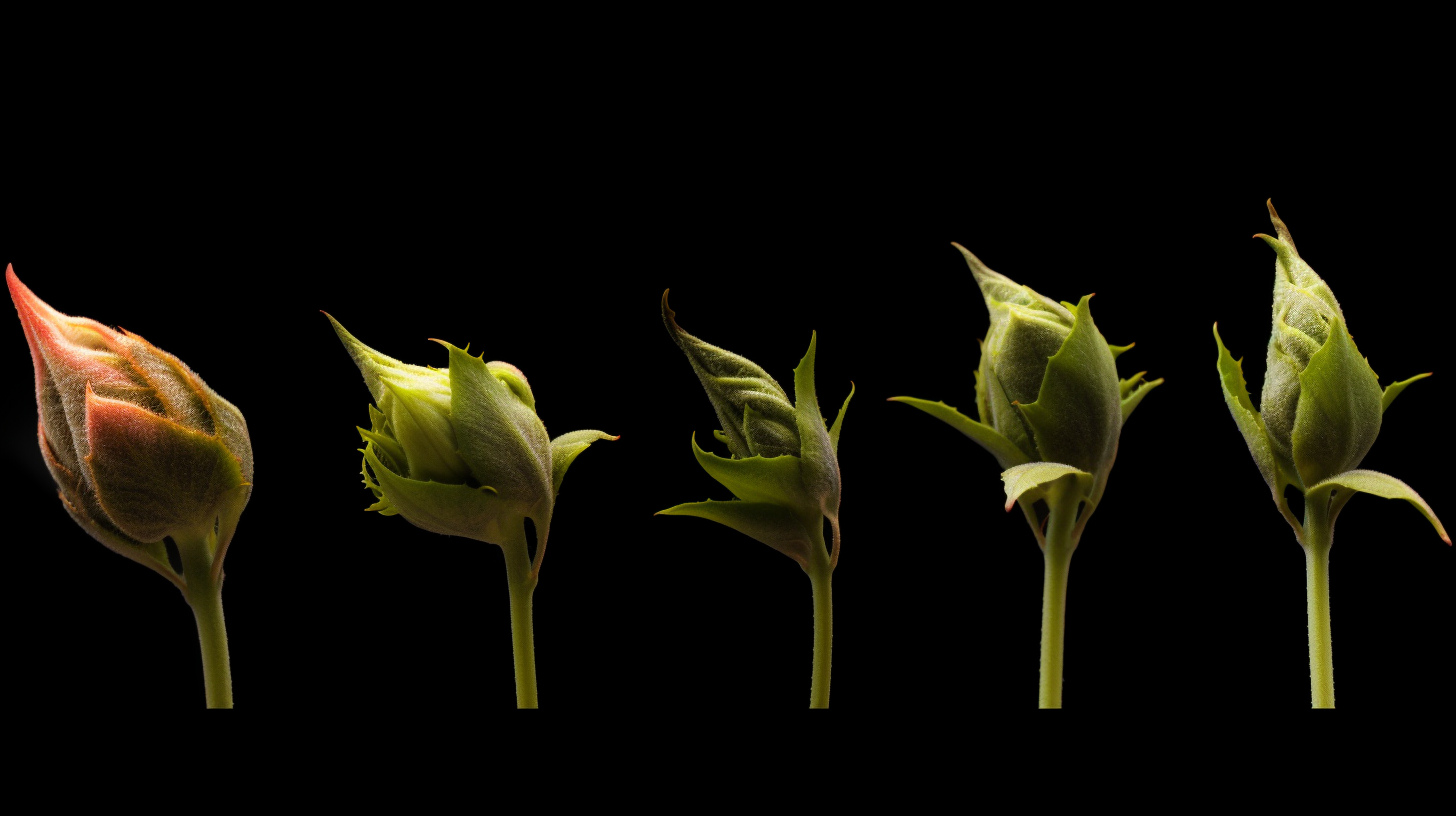Over ripe buds are more than just a minor setback; they represent lost potential in what could have been an ideal harvest.
One crucial detail to remember is that trichomes—the tiny crystal-like structures on your buds—hold the key to determining ripeness. These microscopic marvels change appearance as they mature, guiding growers to the perfect harvest window.
In this article, we'll unwrap the mystery behind identifying and dealing with overripe cannabis buds so you can avoid common pitfalls and maximize your plant's potential. With our guidance, you'll learn how to spot issues early on and salvage what might seem like a lost cause.
Keep reading for insights that could transform your growing game!
What are Over Ripe Buds?
Over ripe buds are what you get when cannabis flowers stay on the plant too long. They're past their best time for picking. This can make your smoking experience less enjoyable because these buds lose some of their kick. Think of it like fruit that's sat on the counter a bit too long—it's still okay, but not as good as when it was fresh.
You'll notice these mature buds change in color and scent. The pistils will look different, and more than 15% amber trichomes mean they've gone overripe. It happens when plants face tough times like too much heat or wind. Those stress factors mess with the plant’s normal growth and can lead to early aging of your buds.
Visual Signs of Over Ripe Buds
As your cannabis plants approach the final stages of maturation, certain visual cues can alert you to overripeness; it's crucial to recognize these subtle yet significant changes. Understanding the transformation in appearance—from the pistils' condition to trichome clarity—ensures you capture the full potential of your harvest without tipping into excess.
Changes in Pistils
Pistils are visual indicators of bud ripeness and quality. As buds go overripe, the pistils often change from white or vibrant orange to dark brown or red. This shift points to a decrease in potency, which is crucial for cannabis growers aiming for peak cannabinoid concentration.
It tells you that harvest timing has passed the ideal window. Mature buds should have a mix of clear, cloudy, and amber pistils, but too many ambers signal lower potency.
Understanding these changes in pistils helps ensure you don't wait too long before harvesting your cannabis plants. Keep an eye on the color transformation as it's essential for maximum quality and effectiveness of your yield.
Changes in Trichomes
Watch your cannabis plants closely because trichomes tell a story of maturity. These tiny crystal-like hairs shift from clear to milky and finally amber as they mature. A sea of amber can wave a red flag that your buds are beyond their best days. You don't want to miss the peak ripeness when cannabinoids are just right for harvesting.
Trichomes are not just about looks; they hold the essence of potency and aroma in your buds. A crumbly texture with less stickiness might mean you've waited too long. Buds past their prime lose that vibrant scent growers love.
Pay attention to these visual signs to catch the harvest at its cannabinoid-rich moment, ensuring your crop holds its full power and fragrance.
Read More: Why Is Cannabis So Colorful
Color and Scent Changes in Buds
Just as trichome changes clue you into ripeness, color, and scent shifts are big red flags. Buds that pass their peak often lose the vibrant greens and may turn to a darker shade, hinting at overripeness.
Look for amber or brownish hues taking over areas once lush and green. This isn't just about looks; the aroma is key, too. Potent, fresh buds have strong smells that fill the air with their distinct scent profiles.
As they go past their prime, those loud aromas fade. What was once a sharp pine or pungent skunk smell might weaken drastically. Cannabis growers know this change well—it's a sign of declining potency in your harvest.
If you catch whiffs of hay or grass rather than rich cannabis notes, it could mean your bud has tipped over the edge from ripe to overripe. Keep these visual and olfactory signs in mind to ensure top-shelf quality in your crop.
Read More: The Art of Weed Flavouring Explained
Can You Smoke Over Ripe Buds?
While you might be curious to try over ripe buds, it's important to understand the alterations in potency and experience they bring — stay tuned as we delve into what this means for your smoking session.
Effects and Risks
Smoking over ripe buds can be a letdown. The taste often turns harsh, and the smoke isn't as smooth. Why does this happen? It's because overripe cannabis loses potency, leaving you with a weaker experience. THC breaks down into CBN in these buds. This means you might feel sleepier than usual after using them.
There are also dangers to watch out for. Bud rot is more common in overripe cannabis, making it risky to smoke. Plus, conditions like wind burns and light burns can lead to overripeness, further dropping the psychoactive power of your harvest. Always check your plants carefully to avoid these risks.
Read More: 10 Amazing Things To Do When High
What Causes Over Ripe Buds?
Understanding what leads to over ripe buds is crucial for any grower looking to maintain the quality of their cannabis.
It's not just about marking calendars; a myriad of factors ranging from environmental cues to human oversight can push those precious flowers past their prime, impacting everything from maximum potency to flavor.
Let’s explore these influences further and discover how they can disrupt the delicate balance of the cannabis ripening process.
Read More: How To Grow Hydroponic Weed
Poor Timing in Harvesting
Picking your cannabis too late is like missing the bus—it's a lost opportunity that can cost you big time. Every grower dreams of thick, resinous buds with peak THC content. But wait too long, and that dream could wilt like overripe fruit.
Your plants work hard to puff up those buds, yet timing is everything. If you miss the optimal harvest time, THC breaks down, and the quality of your buds goes downhill fast.
Getting it right isn't just about maximizing potency; it's also about capturing that perfect terpene profile that tickles your senses in all the right ways. Harvesting techniques matter more than many realize—nail them for a yield potential that'll make any grower proud! Remember, high-quality buds are not an accident; they're the reward for watching your cannabis cultivation timing like a hawk.
Incorrect Lighting
Incorrect lighting is a big problem for cannabis plants. It can ruin the ripening process and lead to over ripe buds. Your plants get stressed if they have too much light or it's too intense.
Even excessive heat from your lights can be harmful. This kind of stress makes your plant keep growing new stuff when it should be stopping.
Manage your lights carefully to avoid this mess. You want just the right amount of light—not too much and not too little. Keep an eye on the heat, too, because that can sneak up on you and cook your plants! After getting lighting in check, make sure you're watching for other stress factors that could throw off your cannabis harvest timing.
Read More: How To Protect Your Cannabis From The Sun
Stress Factors
Hot temperatures and too much light can mess up your cannabis buds. These stress factors make the plant work overtime, which might ruin its flavors when you smoke it. Avoid stressing your plants during their flowering time to keep them from turning into hermaphrodites.
Growing great weed means keeping stress low for your plants. Make sure they get just the right amount of light and stay cool enough. Keep things stable in their environment so they grow strong and give you the best THC levels without going past ripe.
The study says that various pathogens, including Fusarium and Botrytis species, can infect C. sativa, affecting roots, crowns, foliage, and buds, potentially reducing crop growth and product quality. Source
Read More: How To Grow Cannabis From Seeds
How to Prevent Over Ripe Buds
Navigating the delicate balance of cannabis cultivation and preventing over ripe buds hinges on precise attention to detail—the key to unlocking the full potential of your harvest awaits in our comprehensive guide.
Timing Your Harvest Correctly
Watch your plants closely to time your harvest just right. You want to catch the buds when they're perfectly ripe, not over or underdone. Check the trichomes and pistils daily as your cannabis flowering stage reaches its peak.
Clear trichomes mean it's too early, but once they turn a milky white or amber color, you're good to go. Harvesting in stages can be smart; take the ripe tops first and give the lower buds extra time.
Keep an eye on lights and stress factors, too—they play a big part in getting to that sweet spot of ripeness. With care, you can speed up ripening if needed without sacrificing quality or yield.
After nailing down the timing, focus on keeping your light levels just right for healthy growth all through the cannabis growth cycle.
Maintaining Optimal Light Levels
Getting your harvest timing right is just step one. Next, focus on light to keep plants healthy. Photoperiod plants need 12 hours of light a day for best results. This controls when they flower—and when you should pick them. Give cannabis the right amount of sunlight or artificial light to avoid overripe buds.
Use proper lights and adjust as needed for your cannabis strain's specific needs. With good genetics and enough sunlight, you can figure out the best time to collect your plants. Preventing overripe buds starts with sticking to a precise lighting schedule. Avoid light stress by ensuring consistent exposure without sudden changes.
Minimizing Plant Stress
Keep your plants as happy as they can be to avoid overripe buds. You'll want to watch out for signs of distress. Too much wind or rough handling might make them unhappy. Make sure not to shake them up too much, especially right before harvest time.
Some growers think flushing plants with lots of water at the end makes better buds, but this isn't true and just stresses the plant.
Use stress to your advantage, but don't go overboard. A little bit can actually help grow bigger buds. Just learn how much is good and when it's too much. The key is understanding your plants well enough so you know exactly what they need without causing extra stress that leads to those overripe buds you're trying to prevent.
What to Do with Overripe Buds
Discovering your buds have tipped past prime ripeness doesn't mean all is lost. From unique applications to tailored curing techniques, there's a world of possibilities for making the most out of overripe cannabis, providing valuable alternatives that ensure every harvest counts.
Possible Uses
Overripe buds have a place in your cannabis toolkit. You can turn them into infused butter or oil, perfect for baking treats or cooking savory dishes with a twist. Imagine adding a special touch to cookies or pasta with your very own cannabis-infused ingredients! Make potent tinctures, too—drop them under the tongue for quick effects.
Don't stop there; create a hash and concentrate from overripe buds for a more intense experience. Maybe you love gardening? Use those same buds to make compost that will feed future plants.
This way, overripe buds support the next cycle of growth in your garden, making everything come full circle.
Curing Process for Overripe Buds
Once you've explored the possible uses for overripe buds, it's time to look at how curing can help. Curing your overripe buds is like giving them a second chance to shine. Begin by drying them until they feel just right—not too moist and not crumbly dry.
This step usually takes about a week.
After drying, place your buds in an airtight container. Open this container several times a day during the first week—the process known as "burping." This lets any moisture out and brings fresh air in.
Continue doing this for 2-3 weeks, and watch the magic happen! Your overripe buds will develop better flavor and might even see an increase in potency. Remember, patience is key; don't rush the process.
With proper care, your mature cannabis flowers can become something special even after their peak ripeness has passed.
Conclusion
Knowing the signs of overripe buds is key. You can spot them by checking pistils, trichomes, and color changes. To get the best smoke, harvest on time and keep plants happy with good light and less stress.
If you end up with overripe buds, don't worry – there's still plenty you can do with them. With these tips, your next cannabis crop will be top-notch!
FAQs
How can I tell if my buds are overripe?
You'll notice the color of the trichomes changing from milky white to amber, and the pistils may look brown and withered.
Are overripe buds still okay to use?
Yes, you can still use them—they might have a different effect or taste compared to perfectly ripe ones.
Can overripe buds affect the high I get?
They could—overripe buds tend to produce a more sedative effect due to increased levels of CBN.
Should I throw away my overripe buds?
No need—their potency might be reduced, but they're typically fine for consumption or making edibles.
How long do buds take to ripen?
The ripening time for buds can vary greatly depending on the plant species and environmental conditions. Generally, it can take anywhere from a few weeks to several months for buds to mature and reach full ripeness. Optimal sunlight, water, and nutrient availability are crucial factors that influence the ripening process.
Will buds ripen without fan leaves?
While fan leaves are vital for photosynthesis and overall plant health, buds can technically ripen without them. However, the process may be slower and the final yield compromised, as fan leaves contribute to the plant's ability to produce energy and synthesize important compounds. Therefore, maintaining healthy fan leaves is beneficial for optimal bud development.
What happens if you over dry buds?
If buds are over dried, they can lose much of their flavor and aroma due to the degradation of terpenes, which are the compounds responsible for these qualities. Additionally, overly dry buds may result in a harsher and less pleasant smoking experience and can reduce the overall potency and quality of the final product.
What happens when buds turn brown?
When buds turn brown, it is often a sign of overexposure to air, light, or heat, which can lead to oxidation and degradation of essential oils and cannabinoids. This discoloration can indicate a decrease in quality, with potential impacts on taste, aroma, and effectiveness. Proper storage and timely harvesting are key to preserving the buds' desirable properties.


 Français
Français 



